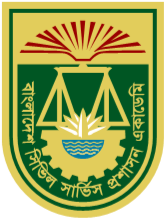An analysis of the Contribution of Community Clinics to Primary Health Care
Abstract
Community clinic (CC) is the brainchild of HPM Sheikh Hasina which started its
journey in 1998. Within the 1998-2001 period, 10723 community clinics were built
under the CBHC programme through proper guidance of DGHS that belongs to the
Ministry of Health and Family Welfare (MoH&FW). It is the front-line primary health
care outlet for rural communities. Due to the change of national government in 2001,
all supports were withdrawn from this one-stop service centre, during 2001-2008 many
CCs were demolished or have become dysfunctional due to various reasons. In 2011, a
project was initiated to revitalize the health care facilities through CCs which was
subsequently incorporated with CBHC operational plan under HPNSH, a sector
programme belonging to MoH&FW. Since 2011, primary health care services are
continuing through CCs. As a participant of the 132nd ACAD course and having obligations to conduct research
work, I have chosen the topic “An analysis of Contributions of CCs to primary health care”.
To conduct the research work, data were collected from primary and secondary sources. For
collecting the primary data, service recipients were interviewed through a semi-structured
questionnaire from two CCs of Savar Upazila. Secondary data were collected from different
studies, books, journals, articles published in different newspapers and by interviewing
experts in health care issues. Primary data were analysed to categorize all the health care
services. It is found that three types of health care services are provided from CCs which
are- (1) Promotional, (2) Preventive and (3) Curative. This study unveils that amongst three
types of services, 86% are curative health care, 12% are preventive and 2% are promotional.
CCs have also reduced the TCV of the clients as they had to go to UHC to receive the
same type of health care. It also enhances the referral system and working as the
flagship to attain the SDG-3 and Vision-2041. Some limitations are also lying in CCs as
these door-step service outlets are not furnished with furniture, toilet facilities,
equipment and manpower. Only one permanent personnel called CHCP runs this health
centre. HA and FWA help CHCP every alternate working day in a week. CG and CSG are
not performing their roles. Need-based training for all these different groups is absent.
Promotional and preventive health care services are not emphasized. In many CCs
communication system is not up to the desired level. The findings of the secondary sources
almost ratify all the lessons learnt from primary data.

